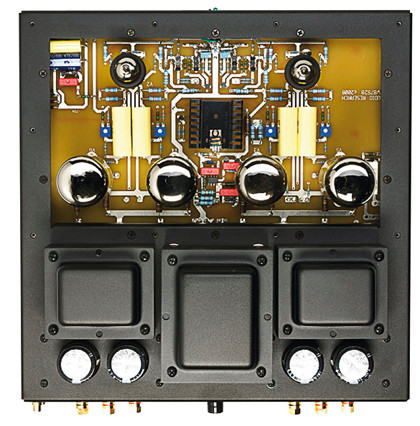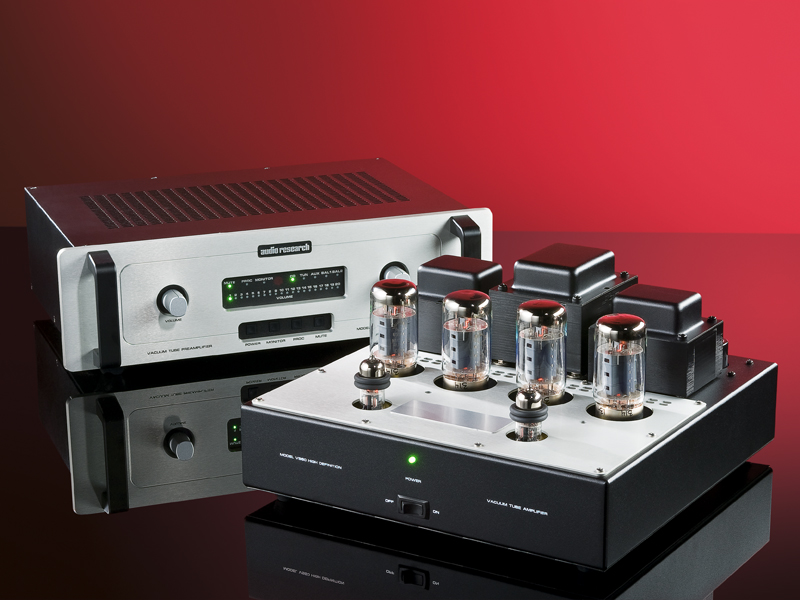TechRadar Verdict
This mature valve combo has intelligent ergonomics and sounds very easy on the ears
Pros
- +
Wonderful midrange
- +
Dynamic expression
- +
Especially when reproducing the human voice
Cons
- -
Loses some definition
- -
Lacks grip
Why you can trust TechRadar
US legend Audio Research was one of very few to stick loyally with valves – or vacuum tubes, as the Americans' prefer to call them – when the rest of the Hi-Fi industry was rushing to embrace solid-state electronics. It can also fairly be called the father of US 'high-end', setting just such an agenda through the early 1970s with legendary 'super amps' like the 150-watt per channel all-valve D150.
Hindsight shows that yesterday's heretic has become today's prophet and now that valve electronics are making a determined comeback, Audio Research holds the high 'I told you so' ground.
Through forty years of continuous production and development, Audio Research has probably learned all there is to know about making valve amps 'for life' and has certainly built up an impressive portfolio of mostly amplification components.
Ancient and modern
The LS17 preamp is a clever combination of microprocessor control with solid-state components used for the power supply, while the active circuitry combines FETs with a couple of Russian 6H30 double triode valves (adorned with lossy damping rings).
The consequence is arguably the best of both worlds, combining the benign thermionic sonic signature with the convenience of full remote control alongside reasonably comprehensive facilities.
Curious combination
Sign up for breaking news, reviews, opinion, top tech deals, and more.
At first – and indeed at second – sight, this separate preamp/power amp is not necessarily the most logical partnership. That's because the LS17 stereo preamp has balanced as well as single-ended inputs and outputs, whereas the VS60 stereo power amp has only one pair of single-ended input connections.
The debate over the comparative advantages and disadvantages of single-ended and balanced connections has raged for years and never been satisfactorily resolved. Despite extra cost and complexity, US brands have long favoured balanced connections, whereas UK companies tend to prefer the simpler single-ended approach.

I'm not taking sides here, but was surprised to find that the VS60 lacked balanced inputs.

Push-button
Presentation is classic ARC, combining a thick oversize silver-alloy fascia with steel casework, perforated for ventilation. The large oval knobs either side of the central display provide hands-on volume control and selection for the five main inputs, while four push-buttons select power, muting and the monitor and processor override inputs.
The electronic volume control is also very well conceived, the 20-lamp display tacking 104 individual steps. Indeed, the only obvious omissions from our point of view are a mono switch and a balance control.
In practice, of course, the real control surface will be the remote handset and the LS17R supplied here is an object lesson of how to do it properly. It's small, light in weight, and has just the minimum number of buttons needed to operate the available functions. Which, if you consider the numerous button-laden handsets which are bulky, heavy and pretentious in design, is exactly what is required.
Easy connections
The rear socket array consists of two stereo pairs of balanced XLR inputs – only really of much use to those who have sources with balanced outputs – plus seven pairs of phono sockets.

The latter comprise just three 'regular' stereo input pairs, a quartet for tape recorder output and monitoring, as well as an input pair for AV processor connection (which presumably by-passes the volume control and supplies full gain).
The three volume-controlled outputs include one pair of single-ended phonos and two pairs of balanced XLRs. A regular 13-amp IEC 'kettle' mains input and a 12-volt 'trigger' make up the full complement.
The 50 watts per channel VS60 stereo power amp is rather simpler. The front has just an on/off toggle with tell-tale LED, while the busier back has one pair of single-ended phono inputs. Three speaker terminals for each channel allow matching to either four-ohm or eight-ohm speakers and don't accommodate the four-millimetre 'banana' plugs popular in Britain – it's spades or bare wires here.
There are also fours pairs of bias test jacks, to provide accurate adjustment for each output valve, 12V 'trigger' in/outputs and a 13-amp IEC 'kettle' mains input. A cover for the valves and transformers is an optional extra.
Reassuringly expensive
Audio Research amplification is far from cheap. The two components reviewed here cost £3,575 and £3,063 for the preamp and power amp respectively, but those figures are far below the truly extravagant price tags that are all too often hung on high-end equipment.
We don't have price-equivalent data for this combo and its immediate predecessors, but have managed to compare the price of the current VSi60 integrated model with the earlier VSi55.
Over the course of no fewer than six years, the £2,895 '55 has morphed into the £3,370 '60 – an increase of a mere 16 per cent, notwithstanding the performance upgrade and the recent collapse in the value of sterling.
Magical Voices
We were very impressed by the Audio Research VSi55, when it debuted six years ago. A commendable performer with an excellent feature list, the model has now been replaced in the ARC line-up by a VSi60, which is quite closely related to this LS17/VS60 combo: a VSi60 is essentially an integrated version of the VS60 power amplifier, albeit with a simplified passive preamplifier).
Regrettably, six years is far too long to attempt to establish what, if any, advantages this brand new combo has over its integrated predecessor. And, unfortunately, there was also nowhere near enough time available to carry out the full 600-hour (!) 'breaking-in' period that Audio Research recommends these components need, in order to achieve their very best sound quality.
Shivers up the spine
But we can say that we were immediately transported into a familiar comfort zone. Valve amps always seem comfortably able to deliver a midrange purity and realism that's clearly and obviously superior even to far more costly solid-state amplification and this LS17/VS60 combo does precisely that.
The sheer realism of a beautiful human voice, such as mezzo soprano Sarah Connolly singing Purcell's Dido's Lament, sent shivers up our spine when we heard it on the radio recently. It even worked surprisingly well via 'Listen Again' over the internet!
Some limitations became more obvious when playing wider bandwidth rock material. After all, this pre/power combo costs just two-thirds the price of Audio Research's top Reference 5 preamplifier, so it's bound to involve some compromise and these are most obvious towards the extreme top and bottom of the audio band.
The low bass lacks a little poise, has a slight tendency to thump and to gloss over the fine textures that distinguish the fine detail of instrument differences. And although the top end is beautifully tidy, it's also perhaps just a little too restrained – lacking some of that all-important sparkle.
Imaging is delicate, spacious and airy, free from any obvious boxiness or coloration and always well-detached from the PMC IB2i speakers we use for reference. However, focus does seem a little vague and weak and this seems to be an effective pointer to the overall sonic character of this amplifier, which is delightfully sweet and transparent, but also just a little soft around the edges.
The total experience is certainly very listenable and enjoyable, but also a little lacking in tautness and dynamic tension.
Follow TechRadar Reviews on Twitter: http://twitter.com/techradarreview
